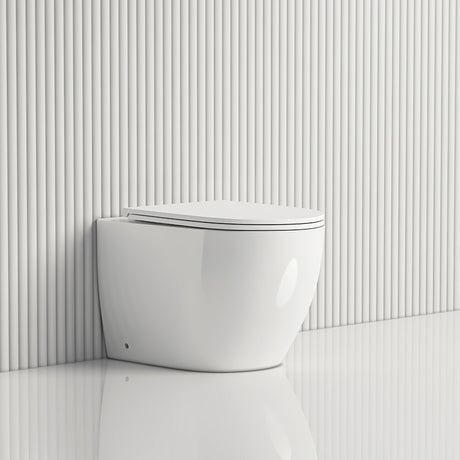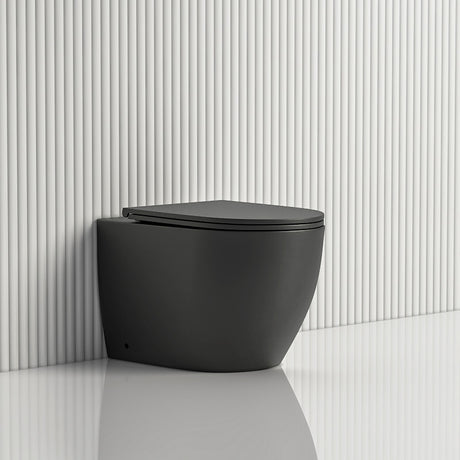14 October, 2025
Bidet Installation for Australia: Ultimate Guide
Master bidet installation in Australia with our DIY guide. Explore types, tools, plumbing needs, step-by-step instructions, common mistakes, and cost breakdowns for a hygienic upgrade.


Putting in a bidet can seem a bit hard, especially with so many kinds to choose from and plumbing rules to follow in Australia. Many people also feel unsure about where to start. So how do you install a bidet?
We are here to make things simple. We will go through the main types of bidets, the basic tools you will need, and clear steps to help you with the setup. We will also share a table of the usual costs of bidet installation in Australia, so you can plan ahead and install your bidet with confidence. Let’s get started!

Can You Install a Bidet Yourself?
In Australia, putting in a bidet is not always an easy DIY job. There are strict plumbing rules under Australian Standard AS3500. These rules treat bidets as a “high risk” installation, meaning special valves are needed to stop dirty water from getting into the clean water supply.
You can still install a bidet yourself if you are a licensed plumber or if the job is very simple, like adding a non-electric attachment that does not change the main water lines.
For most other cases, especially when new water pipes or power connections are needed, you must hire a licensed plumber. This keeps the work safe and follows the law. If you are building or renovating, ask your builder to add a power point and water outlet on the back wall. Doing this early makes future bidet installation easier and cheaper.
What Types of Bidets Are There?
Before jumping into installation, it’s important to understand the different types of bidets available. So you know the level of complexity, features, and compatibility with your existing toilet setup.
- Bidet Attachments: Affordable add-ons that fit beneath your existing toilet seat, offering basic spray functions. Perfect for renters or anyone wanting a quick, low-cost upgrade without major changes.
- Bidet Toilet Seats: Designed to replace your standard seat, providing adjustable water pressure, warm water, and air drying. Electric versions require a nearby outlet; non-electric versions are simpler to install.
- Standalone Bidets: Separate fixtures installed beside the toilet, requiring dedicated plumbing and extra space. Best suited for larger bathrooms.
- Handheld Bidet Sprayers (Shattaf): Wall-mounted hoses allowing manual control. Affordable, portable, and take up very little space. Only need a T-valve connection.
- Integrated Bidet Toilets (Smart Toilets): All-in-one units with built-in bidet functions, heated seats, remote controls, and advanced settings. Smart toilets are premium solutions requiring full toilet replacement.

Plumbing and Electrical Requirements
Installing a bidet in Australia requires attention to both water and power. A separate bidet may need its own drain, while smaller ones often connect directly to the toilet’s water line.
For water, a cold water supply near the toilet is required. Some bidets use warm water, needing a hot water line or self-heating model. Australian rules require a backflow valve to keep water safe, installed and tested annually by a licensed plumber.
For power, only bidets with heated seats, warm water, or air dryers require electricity. A safe 240V GFCI outlet within 1–2 meters is needed. If unavailable, an electrician can install one.
Tools and Materials You'll Need
To fit a bidet properly, gather these tools and materials:
- Bidet toilet seat or bidet attachment
- T-valve (to split the water supply)
- Flexible water supply hose
- Mounting plate or bracket
- Bolts, nuts, and washers
- Screwdriver (Phillips or flathead)
- Adjustable wrench
- Towels or rags
- Small bucket (optional)
- Power cord and nearby GFCI outlet (for electric models)
- Plumber’s or Teflon tape (optional)
How Do You Install a Bidet: Step‑By‑Step
Follow these steps for a bidet toilet seat installation:
- Turn Off the Water Supply: Close the shut-off valve behind the toilet. Place a bucket and towels nearby.
- Remove the Existing Toilet Seat: Lift bolt covers, unscrew bolts, remove seat, and clean toilet rim.
- Install the T-Valve: Disconnect water supply hose from tank. Attach T-valve to fill valve, reconnect original hose to bottom, and connect bidet hose to T-valve.
- Mount the Bidet Bracket: Align mounting plate, insert bolts, and tighten lightly for adjustment.
- Attach Bidet to Toilet: Slide seat onto mounting plate until it clicks. Adjust alignment and tighten bolts evenly.
- Connect the Water Hose: Attach bidet hose to seat inlet. Ensure connections are tight but do not overtighten.
- Turn the Water Back On: Slowly open shutoff valve. Check for leaks and tighten if needed.
- Plug In and Test: For electric models, plug into GFCI outlet. Test spray, pressure, and seat stability.
Common Mistakes to Avoid
- Skip Compatibility Checks: Failing to measure toilet shape or space can lead to ill-fitting bidets.
- Overtightening Connections: Plastic parts may crack. Hand-tighten first.
- Ignore Water Shut-Off: Always turn off supply to prevent flooding.
- Neglect Teflon Tape: Missing tape on threads can cause leaks.
- Improper Alignment: Crooked bidets reduce comfort.
- Forget Backflow Prevention: Skipping RPZ valves violates Australian codes.
- Electrical Oversights: Plugging into non-GFCI outlets is unsafe.
How Much Does It Cost to Install a Bidet? (By Type)
| Bidet Type | Unit Cost (AUD) | Installation Cost (AUD) | Total Estimated Cost (AUD) | Notes |
|---|---|---|---|---|
| Bidet Attachments | $50 - $200 | $150 - $250 (DIY possible for simple models) | $200 - $500 | Affordable entry-level option; includes non-electric spray attachments. |
| Bidet Toilet Seats | $150 - $400 | $150 - $250 | $300 - $700 | Replace standard seat; requires GFCI outlet. Professional plumber recommended. |
| Standalone Bidets | $400 - $1,000 | $400 + plumbing ($400-$1,000) | $1,200 - $2,500 | Separate fixture; extra space and dedicated lines needed. |
| Handheld Bidet Sprayers | $50 - $100 | $100 - $150 | $150 - $250 | Simple hose system; RPZ valve adds $300+ with annual testing $100-200. |
| Integrated Bidet Toilets (Smart Toilets) | $1,000 - $3,000 | $250 + electrician ($200-$500) | $1,500 - $4,000 | All-in-one units; require toilet removal. Electric features need licensed pros. |
For bidet installation in Melbourne or Sydney, labour may cost 10-20% more. Always request a quote from a licensed plumber for exact pricing.
Conclusion
Installing a bidet in Australia is manageable with proper tools, knowledge, and professional help. Whether adding a simple attachment or a smart bidet seat, careful planning ensures safety and long-lasting results. MyHomeware offers a wide range of quality bidets and installation accessories to make the process easier.











